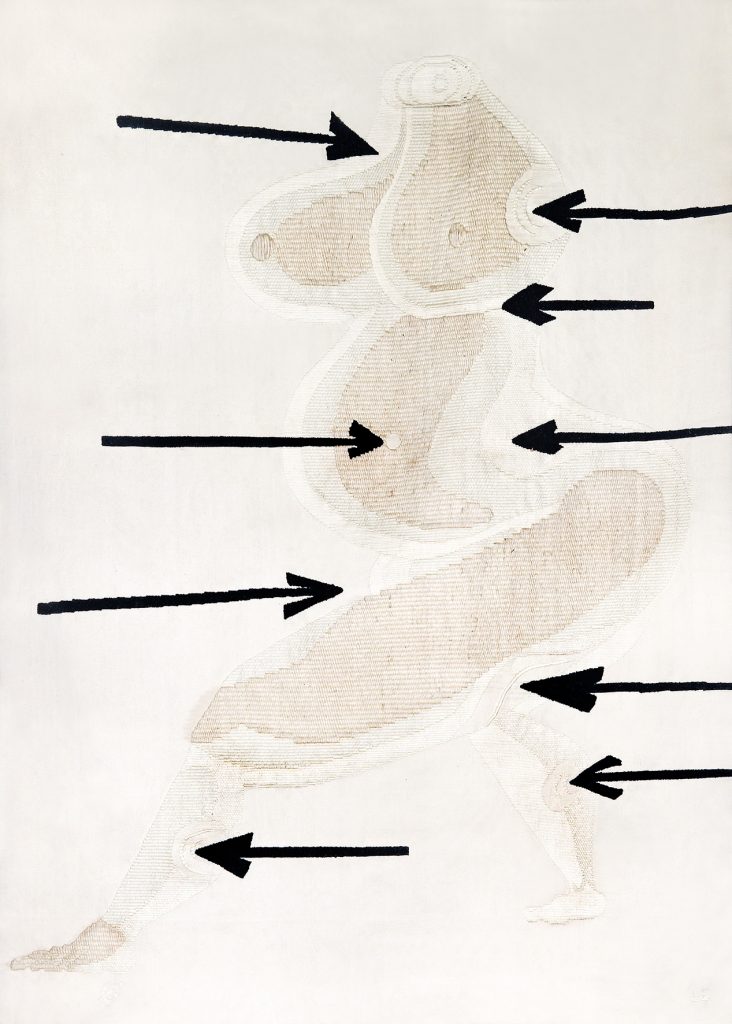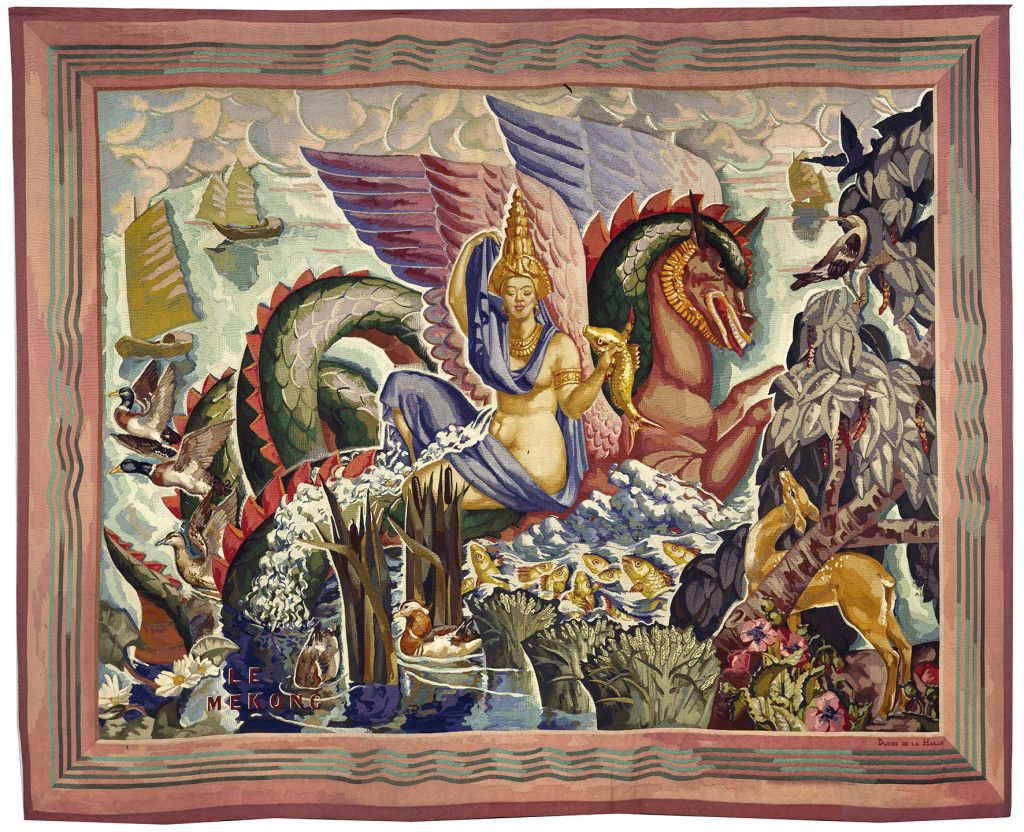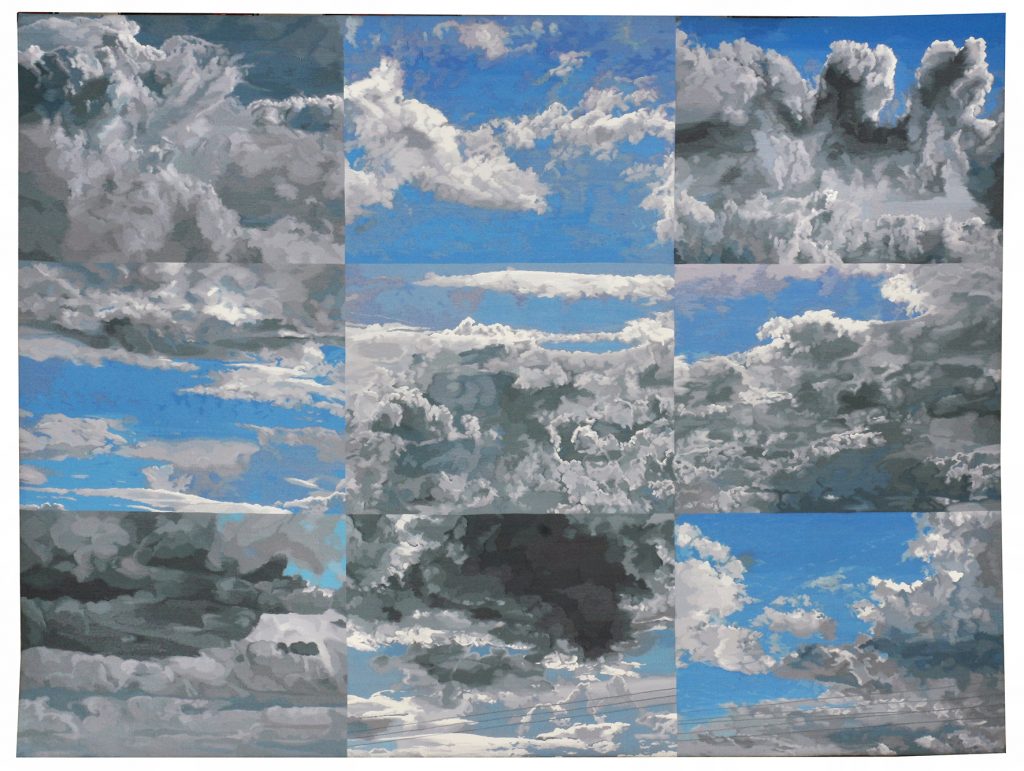ART CITIES:Munich-The Fabric of Modernity,Part II
 The exhibition “The Fabric of Modernity” presents for the first time in Germany presenting tapestries that were produced in the Manufacture des Gobelins in Paris from designs created by the most prestigious artists of the 20th and 21st centuries, including Henri Matisse, Pablo Picasso, Le Corbusier, Joan Miró and Louise Bourgeois. With innumerable large-scale wall hangings that span the period from the end of World War I to the present day, the exhibition reveals just how surprisingly modern the traditional craft of tapestry weaving truly is (Part I).
The exhibition “The Fabric of Modernity” presents for the first time in Germany presenting tapestries that were produced in the Manufacture des Gobelins in Paris from designs created by the most prestigious artists of the 20th and 21st centuries, including Henri Matisse, Pablo Picasso, Le Corbusier, Joan Miró and Louise Bourgeois. With innumerable large-scale wall hangings that span the period from the end of World War I to the present day, the exhibition reveals just how surprisingly modern the traditional craft of tapestry weaving truly is (Part I).
By Dimitris Lempesis
Photo: Kunsthalle der Hypo-Kulturstiftung Archive

The exhibition “The Fabric of Modernity. Matisse, Picasso, Miró … and French Tapestries”, as the full title is, showcases one virtually unknown aspect in the oeuvre of artists of international renown: turning their attention to tapestry, they have extended the limits of the genre, constantly re-interpreting the age-old textile art form and giving it a new lease of life. Working to artists’ designs, the Manufacture des Gobelins, which was founded during the reign of Louis XIV (1638-1715), and other French workshops produced not just tapestries, but also furniture and carpets of outstanding quality, examples of which are also on show in the exhibition. In nine sections, the exhibition traces the development of the modern tapestry and the history of the French manufactories in the 20th Century. Not only do the pieces on display chronicle the historical upheavals, they also attest to the numerous developments in the visual arts that came to the fore during this century and were refl ected in textile art. The tour begins with tapestries from the period following World War I. Projects such as Georges Desvallières’ “France 1918” (1936) symbolise the fate of the nation during the war. Others, such as Edmond Yarz’ “The Pyrénées” (1924), celebrate the beauty of their French homeland. The fascination with other, ‘exotic’ cultures and the Grande Nation’s claim to colonial power found expression during the inter-war years in decorative tapestries such as “Le Mékong” (1935-37) by Pierre-Henri Ducos de la Haille, which represented the state manufactories at World Expositions. The next chapter is devoted to Jean Lurçat, who started making a name for himself as the re-inventor of tapestry in the 1930s. He propagated a return to the characteristic features of the textile medium, calling for a greatly reduced color palette, simplified lines and distinctive, decorative imagery that was disengaged from painting. The following exhibition room sheds light on a watershed in the history of modern Gobelins by exploring the role played by tapestries and the manufactories in occupied France during World War II. The monumental works commissioned by Joachim von Ribbentrop and Herman Göring bear silent testimony to the megalomania of the National Socialists: the unfinished tapestry “The Globe” (1941-44) was originally designed to be more than 72 m². By contrast, Jean Lurçat turned the tapestry into a form of socialist protest, carrying out projects in the unofficial ateliers of Aubusson as part of the resistance against the national socialist regime. The end of World War II heralded the dawning of a new era for the manufactories, which subsequently placed greater emphasis on the collaboration with prominent artists. The great masters, among them Henri Matisse, Pablo Picasso, Sonia Delaunay and Joan Miró, were to transport the medium into the present and help give tapestry a higher standing in the art system. Many of their designs were intended to be made exclusively as tapestries, thereby accentuating the characteristic features of the textile art form. The increasing trends towards abstraction in painting and sculpture during the post-war era were also manifest in the projects of the French manufactories, for example in tapestries based on originals by Hans Hartungor Zao Wou Ki. The unique allure of many of these gestural, abstract works lies in the awe-inspiring skill with which even the finest brushstrokes were replicated using a loom. Even Op art exponents such as Victor Vasarely and Yaacov Agam designed carpets and tapestries that showcased their signature optical illusions, creating the impression of movement and the semblance of three-dimensionality. Moreover, collaborations with sculptors Alicia Penalba and Edouardo Chillida experimented with and transcended the boundaries of the medium. Penalba’s “Triptych” (1982-83) depicts heavy, black shapes in relief, contrasted against a white background, thereby elevating tapestry into the realm of sculpture. The exhibition concludes with a series of compositions that explore the potential of new media and digital imaging techniques, shaping the future of tapestry on a progressive scale. They include photo-realistic tapestries, such as “Friday” (2010) by Patrick Tosani, as well as works that show unusual perspectives or adapt digital images. When Raymond Hains replaces the classic border of his tapestry diptych “From Eustache to Natacha” (2001-05) with the frame of a computer screen, this is not merely a modern take on traditional visual elements. His approach also highlights the structural similarity between digital imaging techniques, which are based on pixels, and the corresponding, grid-like weave of the tapestry.
*Manufacture des Gobelins is a historic tapestry factory in Paris. It is best known as a royal factory supplying the court of the French monarchs since Louis XIV, and it is now run by the Administration générale du Mobilier national et des Manufactures nationales de tapis et tapisseries of the French Ministry of Culture. The factory is open for guided tours by appointment. The Galerie des Gobelins is dedicated to temporary exhibitions of tapestries from the French manufactures and furnitures from the Mobilier National, built in the gardens by Auguste Perret in 1937.
Info: Kunsthalle der Hypo-Kulturstiftung, Theatinerstraße 8, Munich, Duration: 6/12/19-8/3/20, Days & Hours: Daily 10:00-20:00, www.kunsthalle-muc.de



